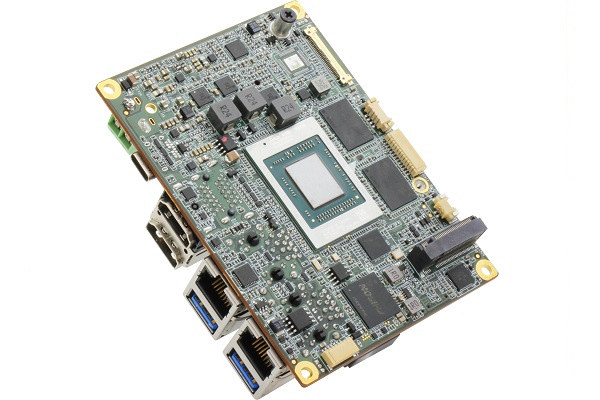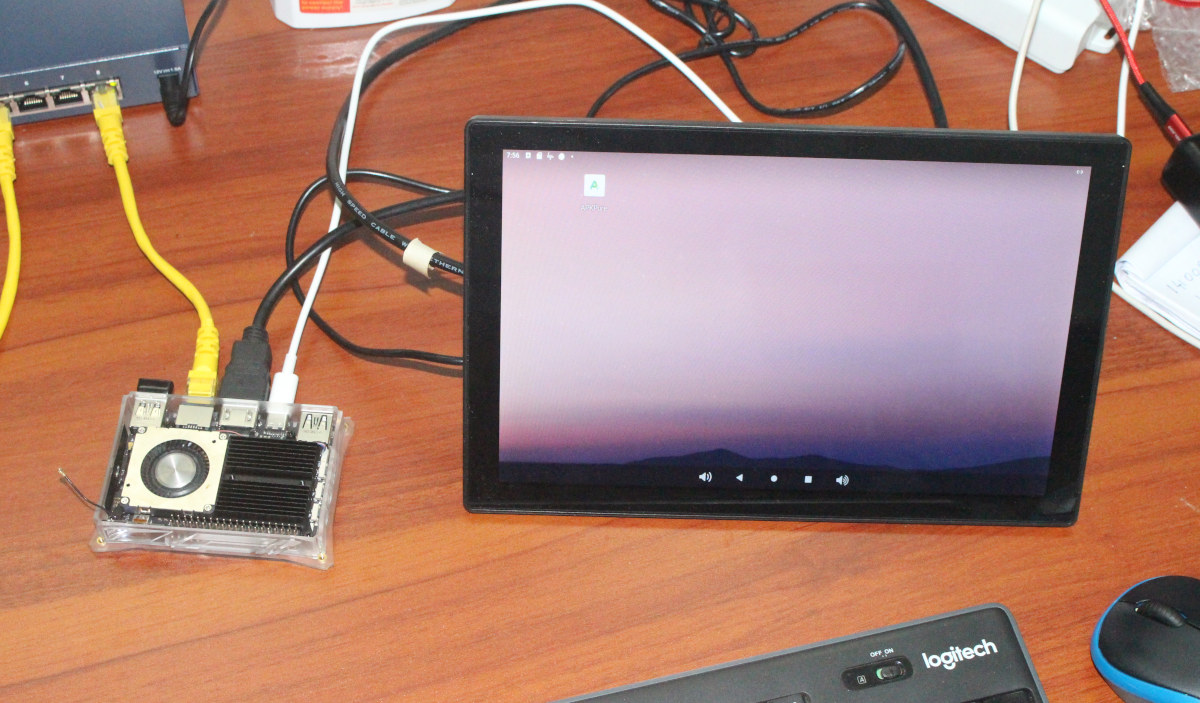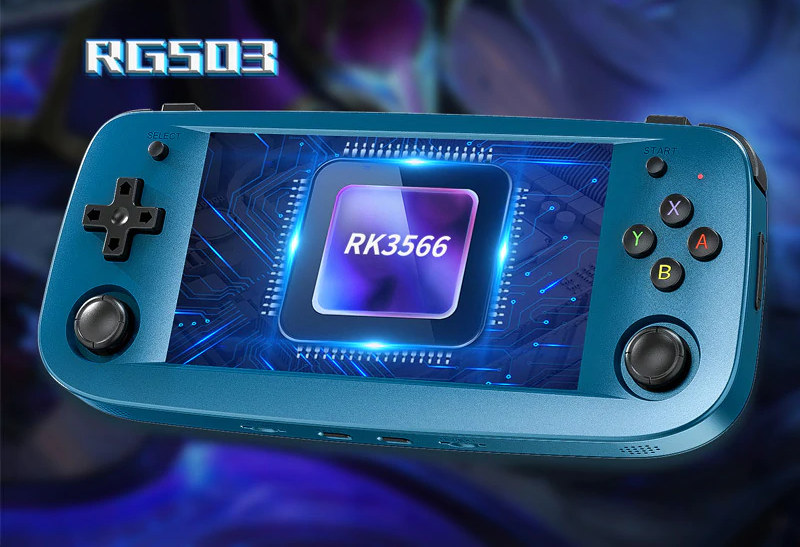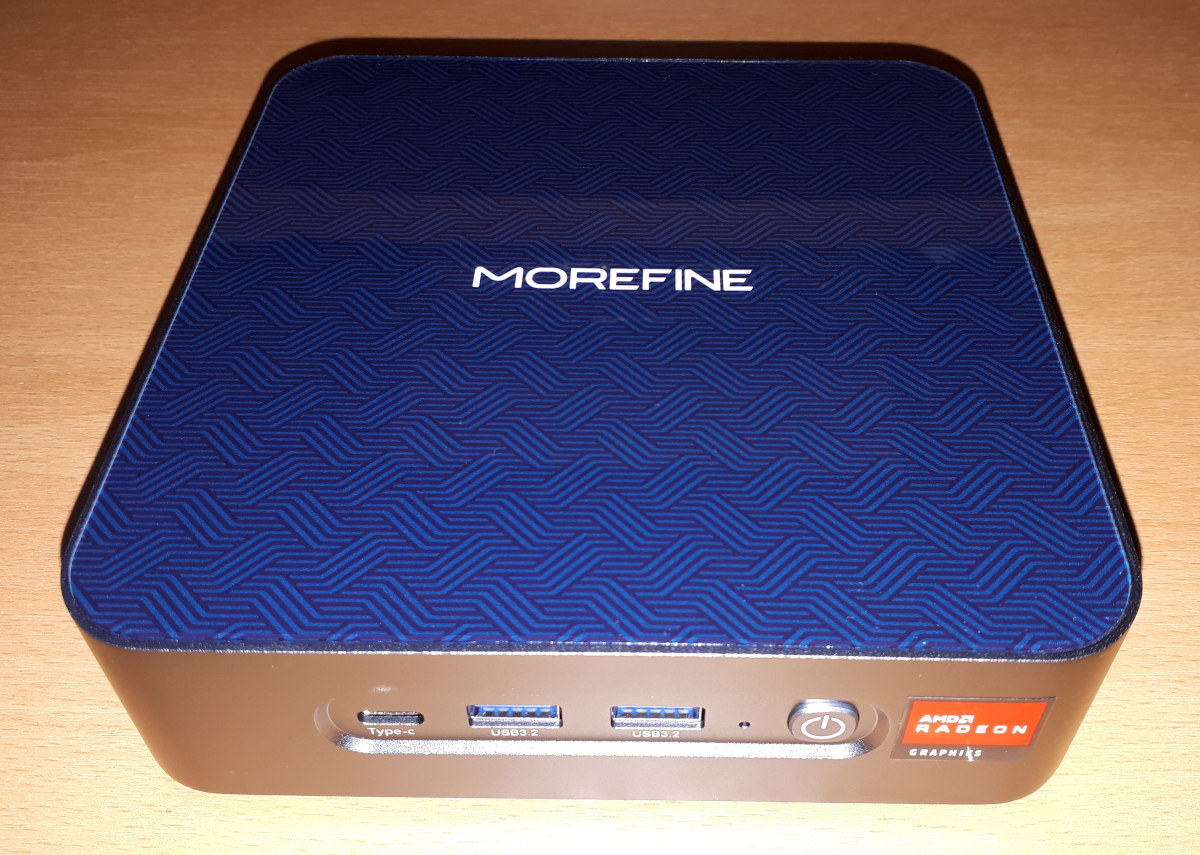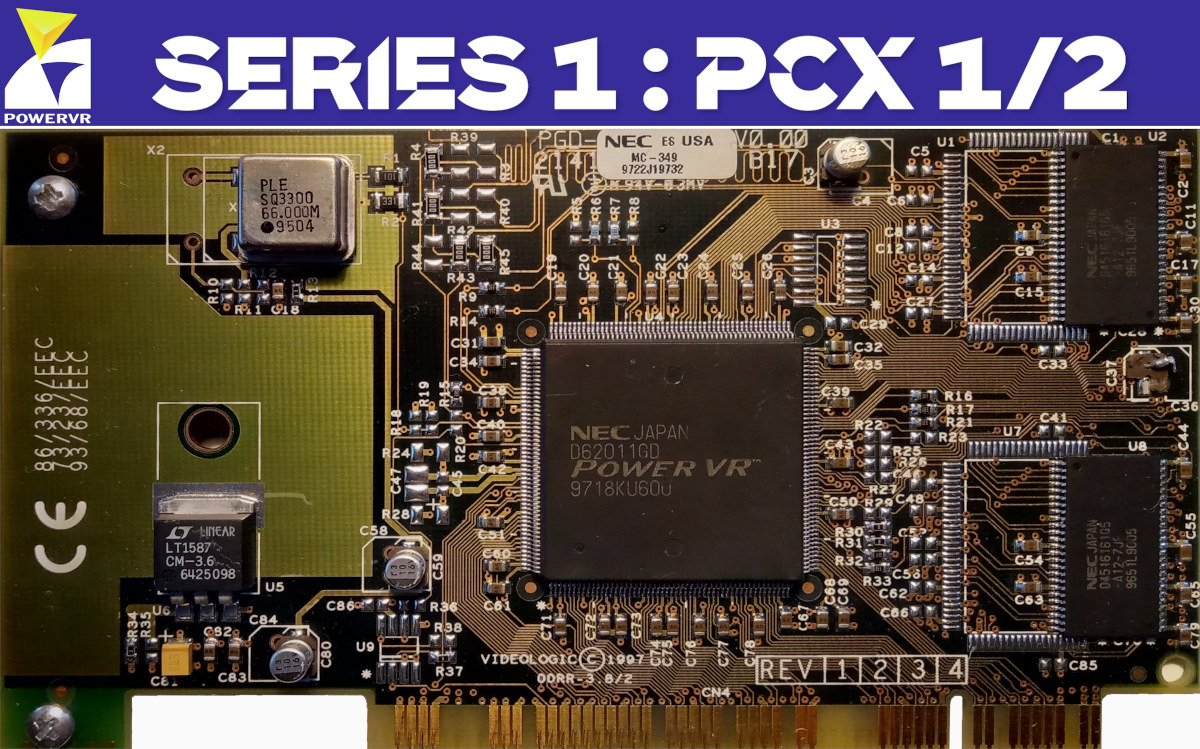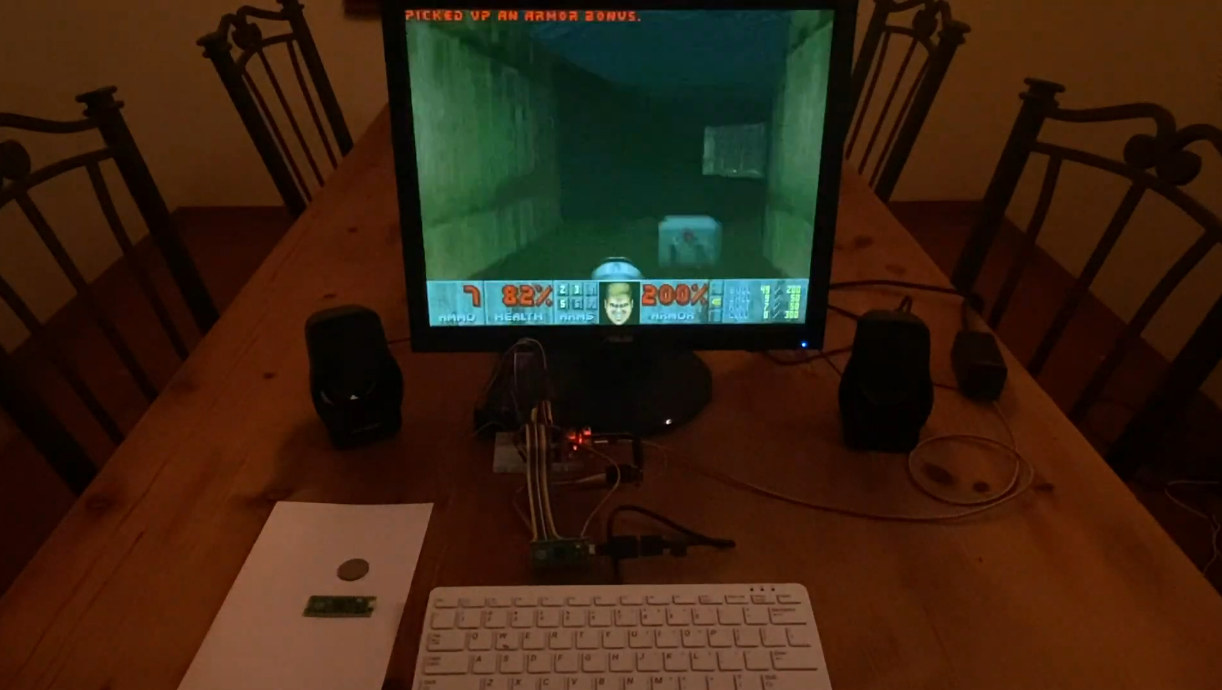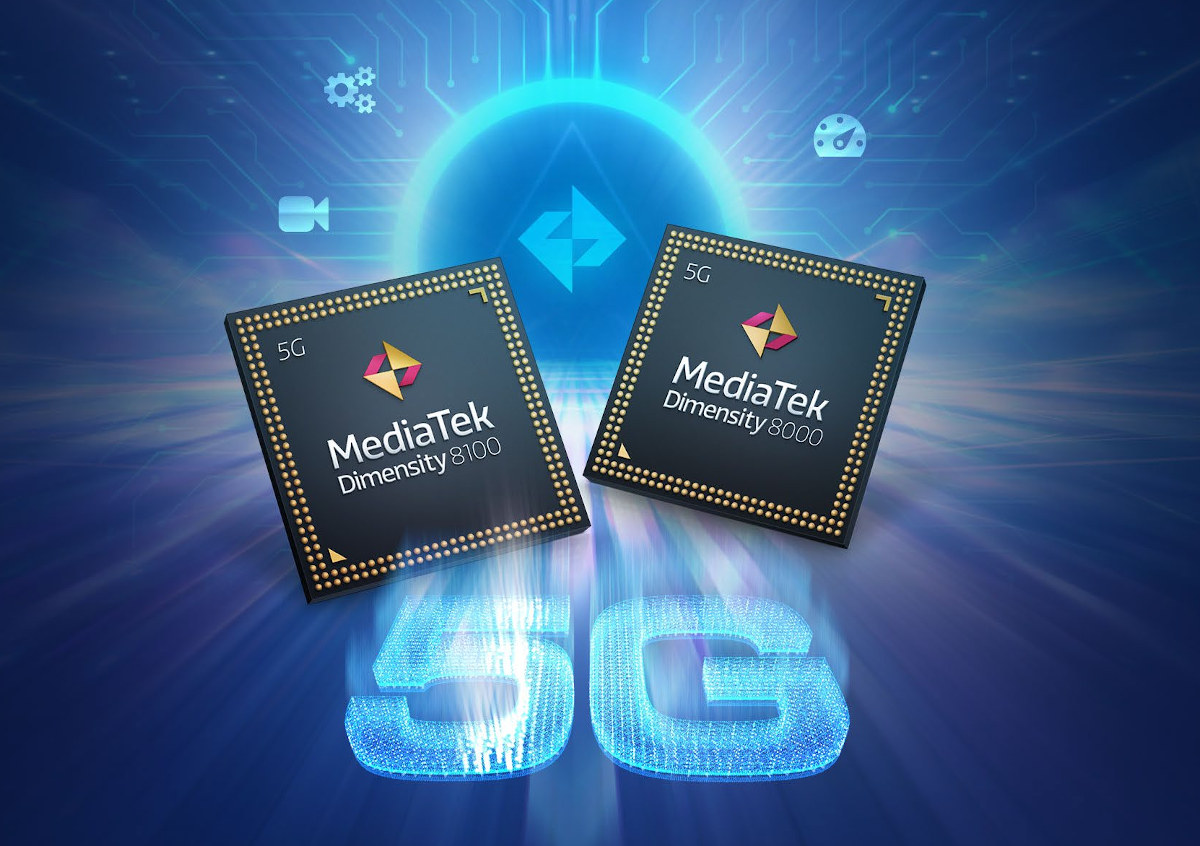AAEON PICO-V2K4 is a Pico-ITX board powered by an AMD Ryzen Embedded V2000 processor with up to 8 cores, AMD Radeon graphics, which should make it the world’s smallest Ryzen V2000 SBC on the market. The board comes with up to 32GB soldered-on memory and a 64GB NVMe flash, supports for SATA and M.2 NVMe storage, dual Gigabit Ethernet, up to four 4K display interfaces, four serial ports, and more. Use cases range from medical imaging (x-ray and MRI scan analysis) to casino gaming machines, and industrial automation. AAEON PICO-V2K4 specifications: AMD Ryzen Embedded V2000 processor (one or the other) Ryzen V2718 octa-core/16-thread processor @ up to 1.7-4.15 GHz (Turbo) with Radeon RX Vega 7 GPU; TDP: 10-25W Ryzen V2516 hexa-core/12-thread processor @ up to 2.1-3.95 GHz (Turbo) with Radeon RX Vega 6 GPU; TDP: 10-25W System Memory – Up to 32GB LPDDR4x 3733 MHz Storage Up to 64GB on-board […]
Khadas VIM4 Review – Part 2: Android 11 preview and benchmarks
In the first part of Khadas VIM4 review, I showed off the Amlogic A311D2 SBC and some accessories such as the DIY case and M2X expansion board to add M.2 SSD and modem and tried out OOWOW cloud services to install Ubuntu 20.04 server. I’ve now just gotten Fiber Internet at home, so it’s much more practical to test the system, and in the second part of the review, I’ve installed Android 11 on the VIM4 board, checked out settings and system info, and ran some benchmarks. It will be more like a preview since Android 11 is not a consumer-friendly system at this time, and is more designed for people wanting to build their own applications. Installing Android 11 on Khadas VIM4 with OOWOW system Last time around, I used OOWOW system install in the SPI flash on the board to download and install Ubuntu 20.04 server to the […]
Rockchip RK3566 SoC gets into $150 Anbernic RG503 gaming handheld with OLED display
Rockchip RK3566 processor is designed for AIoT applications like NVR systems, but we’ve seen it integrated into mini PCs, TV boxes, and now a gaming handheld with the Anbernic RG503 equipped with a 4.95-inch OLED display. The portable gaming console also includes 1GB LPDDR4 and 16GB storage, plus an optional 64GB microSD card with 4193 games, all the buttons you’d expect from a gaming handheld, plus micro HDMI output for connection to a larger screen. Anbernic RG503 specifications: SoC – Rockchip RK3566 quad-core Cortex-A55 processor @ 1.8 GHz with Arm Mali-G52 EE GPU, 0.8 TOPS NPU/AI accelerator System Memory- 1GB LPDDR4 Storage 16GB microSD card Optional 64GB microSD card with 4193 games Display – 4.95-inch OLED display with 960×544 resolution (non-touch) Video Output – Micro HDMI 2.0a up to 4Kp60 Audio – Dual stereo speakers, 3.5mm audio jack Connectivity – Dual-band 802.11 a/b/g/n/ac WiFi 5 and Bluetooth 4.2 (e.g. for […]
Morefine S500+ Review – An AMD Ryzen 7 5700U mini PC tested with Windows 11, Ubuntu 20.04
Morefine has recently released their S500+ series of mini PC series which features models with either a Zen 2 or Zen 3 AMD mobile processor. Morefine kindly sent one for review and I’ve looked at performance running both Windows and Ubuntu. Morefine S500+ Hardware Overview The S500+ physically consists of a 149 x 145 x 40mm (5.87 x 5.71 x 1.57 inches) square metal case with a plastic top. As an actively cooled mini PC, it is available with either an AMD Zen 2 or Zen 3 mobile processor. The review model came with AMD’s 7 nm Zen 2 Ryzen 7 5700U Lucienne processor which is an eight-core 16-thread 1.8 GHz mobile processor boosting to 4.3 GHz with Radeon Graphics. The front panel has a power button, a light to indicate power, two USB 3.1 ports, and a Type-C USB 3.1 port with Alternate Mode. The rear panel includes a […]
Lakka 4.0 game emulator released with LibreELEC 10.0.2 and RetroArch 1.10.1
Lakka 4.0 is the latest release of the game emulator based on LibreELEC 10.0.2 and RetroArch 1.10.1 frontend GUI for LibRetro game emulators cores. While Lakka was initially designed for Raspberry Pi boards in a way similar to RetroPie, it also works just fine on many other Arm platforms and PCs. Main changes to Lakka 4.0 compared to version 3.7: Build system based on LibreELEC 10.0.2 RetroArch updated to 1.10.1 Cores updated to their most recent versions superbroswar: added new libretro core sameduck: added new libretro core Mesa updated to 22.0.0 Mainline kernel updated to 5.10.103 (PC, Amlogic, Allwinner, NXP) Raspberry kernel updated to 5.10.95 Most arm devices switched to aarch64 Rockchip RK3288, RK3328 and RK3399 switched to mainline kernel 5.10.76 Added support for additional Allwinner and Amlogic devices (not tested on our side, as we do not own many of these devices) Nintendo Switch: complete rewrite of the port […]
Imagination open sources PowerVR Series 1 GPU drivers
Saying that Imagination Technologies is not exactly popular in the open-source community would be an understatement, but the company has just open-sourced the driver source for Power Series 1 GPUs namely Midas Arcade, PCX1, and PCX2. If those names do not ring a bell, it might be because some of you may not have been born when PowerVR GPUs were first unveiled in 1995, and launched in products in 1996/1997. Developed jointly by VideoLogic and NEC, PowerVR was touted as the “future of high-quality 3D graphics for the next generation of interactive entertainment”, “whether you are developing 3D systems for console, PC, or arcade systems”. VideoLogic was renamed Imagination Technologies in 1999. The PowerVR PCX1/PCX2 GPUs were notably used in the Apocalypse 3D/3Dx and Matrox M3D graphics cards with support for Direct3D and playing games such as Tomb Raider or Wipeout XL on Windows PCs. I can remember playing those […]
Doom ported to Raspberry Pi RP2040
Doom has been ported to all sorts of platforms, including ESP32 platforms with 4MB PSRAM but “RP2040 doom” port of Doom to the Raspberry Pi RP2040 is more challenging, since RAM is limited to the measly 264KB built-in into the microcontroller, and for boards with only 2MB flash like the Raspberry Pi Pico, storage capacity becomes an issue. But Graham Sanderson solved all those issues by compressing the data, changing the code to use less RAM, making full use of the two Arm Cortex-M0+ cores, both overclocked at 270 MHz, in order to run Doom (DOOM1.WAD) on Raspberry Pi Pico at 320×240 resolution @ 60 fps, and the full Ultimate Doom and DOOM II WADs expected to fit into Raspberry Pi RP2040 boards with 8MB SPI flash. The port was based on Chocolate Doom, OPL2 emulation for audio support was derived from the emu8950 project, and sound effects were compressed […]
MediaTek Dimensity 8000/8100 Cortex-A78/A55 processor to power premium 5G smartphones
MediaTek Dimensity 8000/8100 Arm Cortex-A78 processors for 5G premium smartphones bring many of the features of the flagship Dimensity 9000 Armv9 processor announced last December, but at a more affordable price point. Designed for gamers, the Dimensity 8100 integrates four Arm Cortex-A78 cores with speeds reaching 2.85GHz instead of 2.75GHz for the Dimenssity 8000, and boosts GPU and AI engine’s frequencies to 20% and 25% respectively. MediaTek Dimensity 8000/8100 specifications: Octa-core CPU subsystem 4x Arm Cortex-A78 up to 2.75 GHz (Dimensity 8000) / 2.85 GHz (Dimensity 8100) 4x Arm Cortex-A55 up to 2.0 GHz 4MB L3 cache GPU – Arm Mali-G610 MC6 GPU (Dimensity 8100 with 20% frequency boost) with MediaTek HyperEngine 5.0 gaming technologies AI Accelerator – 5th generation MediaTek APU 580 (Dimensity 8100 with 25% frequency boost) Memory I/IF – LPDDR5 6400 Mbps Storage I/F – UFS 3.1 Display Dimensity 8000 – 168Hz Full HD+ Dimensity 8100 – 120Hz […]


